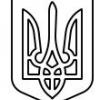Трудни за превод неща на английски
-
Последна активност
-
- 239 мнения
- 5828 прегледa
-
- 1887 мнения
- 159388 прегледa
-
- 66 мнения
- 1966 прегледa
-
- 105 мнения
- 6233 прегледa
-
- 30 мнения
- 81 прегледa
-
-
Последно разглеждащи 0 Потребители
- No registered users viewing this page.


Препръчано мнение
Напиши мнение
Може да публикувате сега и да се регистрирате по-късно. Ако вече имате акаунт, влезте от ТУК , за да публикувате.